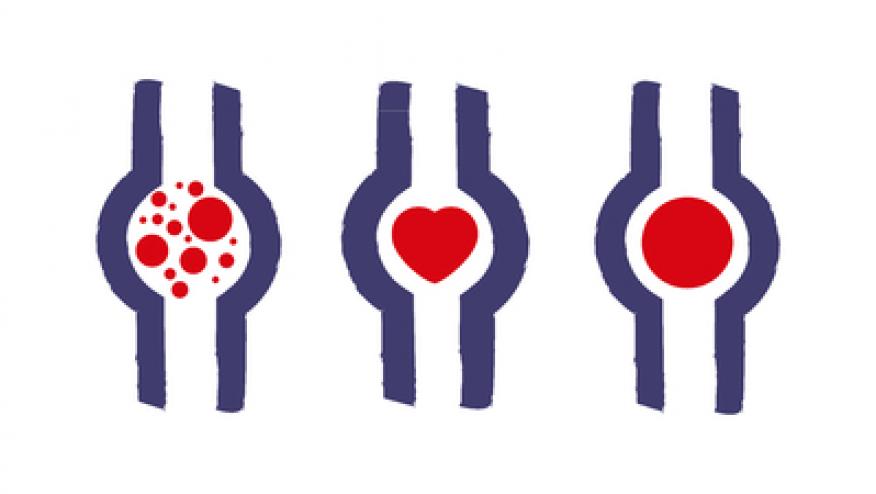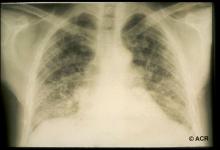Reassuring VTE Data for Tofacitinib Save

No significant differences in risk for venous thromboembolism (VTE) were seen in patients with rheumatoid arthritis (RA) treated with tofacitinib (Xeljanz) and those receiving tumor necrosis factor (TNF) inhibitors, analysis of administrative data showed.
Among patients initiating tofacitinib or a TNF inhibitor from 2012 to 2016 with claims in either Medicare or Truven MarketScan, the propensity score-adjusted hazard ratio for VTE was a nonsignificant 1.33 (95% CI 0.78-2.24), according to Rishi J. Desai, PhD, and colleagues from Brigham and Women's Hospital and Harvard Medical School in Boston.
Since the approval of the JAK inhibitor tofacitinib in 2012, this oral option for treatment of RA has increased in popularity and has now also been approved for use in psoriatic arthritis and ulcerative colitis.
However, "due to limited postmarketing experience with JAK inhibitors in routine care patient populations, our understanding of their safety profile is evolving," Desai and colleagues wrote online in Arthritis & Rheumatology.
Concerns were raised about potential VTE risks during premarketing trials of another JAK inhibitor, baricitinib (Olumiant), and that drug was approved only for use in a low dose. "It remains unknown whether the risk for VTE is attributable to JAK inhibition and extends to tofacitinib," the researchers stated.
To address this question, they compared risks for tofacitinib and TNF inhibitors in real-world use in two large health insurance databases. The analysis included 34,074 RA patients with claims in Truven MarketScan and 17,086 with claims in Medicare. Of these, 1,910 (5.6%) and 995 (5.8%), respectively, were tofacitinib initiators during the study period. Mean ages of patients in the two groups were 50 and 71, respectively.
Patients who had a history of cancer or VTE were excluded, as were those using non-TNF biologics.
More patients starting on tofacitinib had used three or more nonbiologic disease-modifying antirheumatic drugs and glucocorticoids, suggesting that they had more severe or longer duration of disease. There were no differences in the groups for VTE risk factors such as the use of oral contraceptives and recent surgeries.
Crude incidence rates of VTE in Truven were 0.60 (95% CI 0.26-1.19) per 100 patient-years and 0.34 (95% CI 0.27-0.41) per 100 patient-years for tofacitinib and TNF inhibitors, respectively, while the rates in Medicare were 1.12 (95% CI 0.45-2.31) and 0.92 (95% CI 0.76-1.11) per 100.
In the primary analysis, the propensity score-adjusted hazard ratio for VTE in tofacitinib initiators in the Truven database was 1.55 (95% CI 0.75-3.18), and 1.12 (95% CI 0.52-2.40) in Medicare.
Similar nonsignificant differences were seen in sensitivity analyses. In one analysis that included inpatient claims only with intent-to-treat follow-up, the pooled hazard ratio from both databases was 0.90 (95% CI 0.55-1.50), while in a second analysis that included both inpatient and outpatient claims and as-treated follow-up, the pooled hazard ratio was 0.88 (95% CI 0.63-1.24).
"Prompted by a potential safety signal observed in baricitinib premarketing trials, we designed this large observational cohort study to help determine whether this is a class-specific risk for JAK inhibitors by providing a timely assessment of VTE risk with tofacitinib using insurance claims data from U.S. routine-care RA patients," Desai and colleagues wrote.
The risk was numerically higher with tofacitinib, but statistically nonsignificant, they reported.
These data offer "preliminary reassurance" about VTE risk in patients with RA, but the authors pointed out that VTE risks are elevated in RA patients, having been estimated to be almost 2.4 times higher than for matched non-RA controls.
"While continuous monitoring of potential VTE risks related to JAK inhibitors is needed, our results provide timely information regarding the risk of a suspected adverse event for this important drug class in routine care patient populations to help contextualize the risk-benefit trade-offs," Desai and colleagues concluded.
They said that limitations of the study included the small number of VTE events and the possibility of residual confounding by disease activity, physical activity, and obesity.
The study was funded by Brigham and Women's Hospital and Harvard Medical School.
Desai reported receiving research grants to Brigham and Women's Hospital from Merck and Vertex for unrelated projects; other co-authors reported financial relationships with Merck, Vertex, Roche/Genentech, Pfizer, Bristol-Myers Squibb, AstraZeneca, Amgen, Crescendo Bioscience, Sanofi, Lycera, Canfite, Scipher, Vorso, Inmedix, AbbVie, GlaxoSmithKline, Gilead, Eli Lilly, Novartis, Samsung, and Set Point.







If you are a health practitioner, you may Login/Register to comment.
Due to the nature of these comment forums, only health practitioners are allowed to comment at this time.